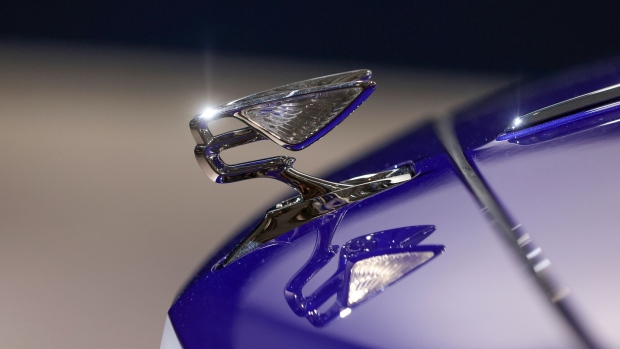Mar 19, 2024
Bentley Buyers Are Splashing Out €39,000 on Options for Each Car
, Bloomberg News

(Bloomberg) -- A few years ago, Bentley brass were doing what auto executives the world over have for years: eyeing Ferrari NV’s business model with envy.
The ultra-luxury British brand within the Volkswagen Group coveted the amount of value its high-performance Italian counterpart was extracting out of every vehicle it was selling. Bentley’s bosses had a decision to make: Should they try to get on Ferrari’s level by way of savings from reducing the amount of complexity in its product line, or by leaning into customization like never before?
Bentley went the latter route, and has struggled ever since with high-class problems. Its clientele has sought more of the many flourishes and special finishes Bentley offers than management counted on, from quilted stitches sewn into seats, to bespoke paint jobs and special wood veneers.
“Customers wanted it, we’ve industrialized it, and it’s just exponentially taking off,” Adrian Hallmark told reporters on a call to discuss Bentley’s second-best year in its history. The Crewe, England-based manufacturer earned €589 million ($640 million) of operating profit on just shy of €3 billion in revenue in 2023, behind only the year prior.
It was an uneven year for Bentley — it had a terrible time in China in the first half, and rising interest rates slowed down decision-making even by its well-heeled customers. But the level of personalization its buyers are demanding is unlike anything the the manufacturer has seen in its 105-year history. It’s a trend that’s keeping earnings buoyant even as the company plows billions into electrifying its lineup.
“On just a few thousand more cars than we used to sell in the 2000s, we’re now making three times, four times the profit per year that we used to make,” Hallmark said. More than 70% of Bentleys bought last year were outfitted with content from the Mulliner business the company beefed up in 2020, on top of the regular €39,000 of options the company sells per car.
Timeline Changes
In the second half of this year, Bentley will refresh its Continental GT and Flying Spur ranges, launching four plug-in hybrid models. The introduction of the brand’s first battery-electric vehicle will slip to late 2026 rather than next year, as previously planned.
“There’s no question that BEVs are the way that we’ll all head in the midterm,” Hallmark said. “But also, what we’re seeing is an uptick in the acceptance and the demand for hybrids.”
As a result of the first BEV being delayed, it’s going to take Bentley another year to launch its full range of fully electric models, which originally was expected to roll out by 2030. That fact, combined with management’s expectation that the appeal of hybrids will endure longer than anticipated, means the company is likely to keep selling some gas-electric vehicles after the end of this decade.
That longer leash on hybrids and slower rollout of BEVs is consistent with moves that Audi, Bentley’s stablemate in VW’s premium brand group, is making. Audi CEO Gernot Döllner told Bloomberg News in an interview late last year that the brand had decided to spread out its launches of fully electric models.
China Outlook
While Bentley is “definitely seeing softening” in China linked to its shaky property market and general economic doldrums, Hallmark said the mood among dealers has perked up the last four to six months, along with a recovery in orders.
China is Bentley’s No. 2 market, after the US.
“One day — I don’t know how long it will be, whether it’s five, 10, 15 or 20 years — there will be incredible, competitive brands in China that give us problems,” Hallmark said. “But right now, we have a unique positioning, and we see no external threats from that, from a political or economic standpoint.”
©2024 Bloomberg L.P.


